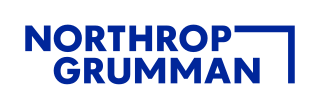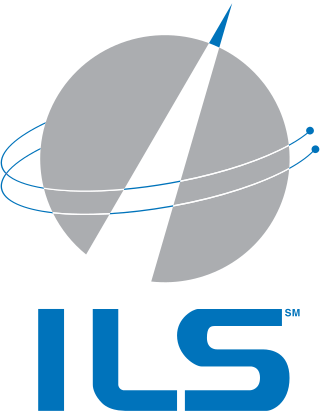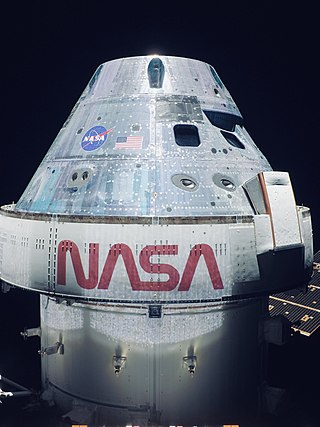Related Research Articles

Northrop Grumman Corporation is an American multinational aerospace and defense company. With 95,000 employees and an annual revenue in excess of $30 billion, it is one of the world's largest weapons manufacturers and military technology providers. The firm ranked No. 101 on the 2022 Fortune 500 list of America's largest corporations.

Alliant Techsystems Inc. (ATK) was an American aerospace and arms manufacturer headquartered in Arlington County, Virginia. The company operated across 22 states, Puerto Rico, and internationally. ATK revenue in fiscal year 2014 was about US$4.8 billion.

National Security Space Launch (NSSL) is a program of the United States Space Force (USSF) intended to assure access to space for United States Department of Defense and other United States government payloads. The program is managed by the Assured Access to Space Directorate (SSC/AA) of the Space Force's Space Systems Command (SSC), in partnership with the National Reconnaissance Office.

Boeing Defense, Space & Security (BDS) is a division of The Boeing Company based in Arlington, Virginia, near Washington, D.C. The division builds military airplanes, rotorcraft, and missiles, as well as space systems for both commercial and military customers, including satellites, spacecraft, and rockets.

Blue Origin Enterprises, L.P., commonly referred to as Blue Origin is an American aerospace manufacturer, government contractor, launch service provider, and space technologies company headquartered in Kent, Washington, United States. The company makes rocket engines for United Launch Alliance (ULA)'s Vulcan rocket and manufactures their own rockets, spacecraft, satellites, and heavy-lift launch vehicles. The company is the second provider of lunar lander services for NASA's Artemis program and was awarded a $3.4 billion contract. The four rocket engines the company has in production are the BE-3U, BE-3PM, BE-4 and the BE-7.

Atlas V is an expendable launch system and the fifth major version in the Atlas launch vehicle family. It was designed by Lockheed Martin and has been operated by United Launch Alliance (ULA) since 2006. It is used for DoD, NASA, and commercial payloads. It is America's longest-serving active rocket. After 87 launches, in August 2021 ULA announced that Atlas V would be retired, and all 29 remaining launches had been sold. As of July 2024, 15 launches remain. Production ceased in 2024. Other future ULA launches will use the Vulcan Centaur rocket.

International Launch Services, Inc. (ILS) is a joint venture with exclusive rights to the worldwide sale of commercial Angara and Proton rocket launch services. Proton launches take place at the Baikonur Cosmodrome in Kazakhstan while Angara is launched from the Plesetsk and Vostochny Cosmodrome in Russia.

United Space Alliance (USA) was a spaceflight operations company. USA was established in August 1995 as joint venture of Rockwell International and Lockheed Martin, primarily to support operations of the Space Shuttle. The sale of Rockwell's aerospace and defense assets to Boeing in December 1996 made Boeing the co-owner along with Lockheed for the rest of the company's corporate existence. The company was headquartered in Houston, Texas and in 2008 employed approximately 8,800 people in Texas, Florida, Alabama, and the Washington, D.C. area. The company was dissolved on 20 December 2019.

United Launch Alliance, LLC (ULA) is an American launch service provider formed in December 2006 as a joint venture between Lockheed Martin Space and Boeing Defense, Space & Security. The company designs, assembles, sells and launches rockets, but the company subcontracts out the production of rocket engines and solid rocket boosters.

The Crew Exploration Vehicle (CEV) was a component of the U.S. NASA Vision for Space Exploration plan. A competition was held to design a spacecraft that could carry humans to the destinations envisioned by the plan. The winning design was the Orion spacecraft.

Commercial Resupply Services (CRS) are a series of flights awarded by NASA for the delivery of cargo and supplies to the International Space Station (ISS) on commercially operated spacecraft.

The retirement of NASA's Space Shuttle fleet took place from March to July 2011. Discovery was the first of the three active Space Shuttles to be retired, completing its final mission on March 9, 2011; Endeavour did so on June 1. The final shuttle mission was completed with the landing of Atlantis on July 21, 2011, closing the 30-year Space Shuttle program.

The Space Launch System (SLS) is an American super heavy-lift expendable launch vehicle used by NASA. As the primary launch vehicle of the Artemis Moon landing program, SLS is designed to launch the crewed Orion spacecraft on a trans-lunar trajectory. The first SLS launch was the uncrewed Artemis I, which took place on 16 November 2022.

Orion is a partially reusable crewed spacecraft used in NASA's Artemis program. The spacecraft consists of a Crew Module (CM) space capsule designed by Lockheed Martin and the European Service Module (ESM) manufactured by Airbus Defence and Space. Capable of supporting a crew of four beyond low Earth orbit, Orion can last up to 21 days undocked and up to six months docked. It is equipped with solar panels, an automated docking system, and glass cockpit interfaces modeled after those used in the Boeing 787 Dreamliner. A single AJ10 engine provides the spacecraft's primary propulsion, while eight R-4D-11 engines, and six pods of custom reaction control system engines developed by Airbus, provide the spacecraft's secondary propulsion. Orion is intended to be launched atop a Space Launch System (SLS) rocket, with a tower launch escape system.

Blue Moon is a family of lunar landers and their associated infrastructure, intended to carry humans and cargo to the Moon, under development by a consortium led by Blue Origin and including Lockheed Martin, Draper, Boeing, Astrobotic, and Honeybee Robotics. Two versions of Blue Moon are under development: a robotic lander planned to land on the Moon in 2024, and a larger human lander planned to land a crew of four astronauts on the lunar surface for the NASA Artemis V mission in 2029.

The Artemis program is a Moon exploration program led by the United States' National Aeronautics and Space Administration (NASA), formally established in 2017 via Space Policy Directive 1. It is intended to reestablish a human presence on the Moon for the first time since the Apollo 17 mission in 1972. The program's stated long-term goal is to establish a permanent base on the Moon to facilitate human missions to Mars.
The Integrated Lander Vehicle (ILV) was a human spaceflight lunar lander design concept proposed in 2020/21 for the NASA Human Landing System (HLS) component of the Artemis program. Blue Origin was the lead contractor for the multi-element lunar lander that was to include major components from several large US government space contractors including Lockheed Martin, Northrop Grumman, and Draper Laboratory.
Starlab is a planned LEO commercial space station, which is expected to launch no earlier than 2028. It is currently being designed by Starlab Space, a joint venture between Voyager Space and Airbus. It is planned to be launched before the decommissioning of the ISS.

The Space Launch System core stage, or simply core stage, is the main stage of the American Space Launch System (SLS) rocket, built by The Boeing Company in the NASA Michoud Assembly Facility. At 65 m (212 ft) tall and 8.4 m (27.6 ft) in diameter, the core stage contains approximately 987 t (2,177,000 lb) of its liquid hydrogen and liquid oxygen cryogenic propellants. Propelled by 4 RS-25 engines, the stage generates approximately 7.44 MN (1,670,000 lbf) of thrust, about 25% of the Space Launch System's thrust at liftoff, for approximately 500 seconds, propelling the stage alone for the last 375 seconds of flight. The stage lifts the rocket to an altitude of approximately 162 km (531,380 ft) before separating, reentering the atmosphere over the Pacific Ocean.
References
- ↑ Foust, Jeff (27 July 2022). "NASA prepares to award SLS launch services contract to Boeing-Northrop joint venture". SpaceNews. Retrieved 10 August 2022.
- ↑ Potter, Sean Sean (27 July 2022). "NASA Prepares for Space Launch System Rocket Services Contract". NASA. Retrieved 10 August 2022.